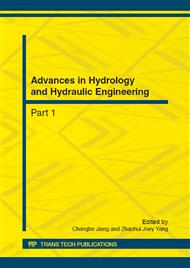p.225
p.230
p.236
p.241
p.245
p.253
p.260
p.264
p.268
Analysis for Influence upon Local Climate Factors of Reservoir Area of Hydropower Station after Water Storage
Abstract:
An artificial reservoir will be formed at the dam upstream in a large hydropower station after the station put into use, and with water area expanding, the local climate will change. This paper takes mesoscale meteorological numerical model WRF to simulate a certain hydropower station in Sichuan to obtain the impacting situation of the local climate after the water storage. The result indicates as follows: firstly, the wind field has been greatest changed after the water storage. Except in the winter, we can found obvious lake-land breeze in the spring and the summer and the flow field is very evident; secondly, the temperature is rising or falling; except for a little change in the spring, the average temperature falls 1.27°C in the summer but rises at 1.28°C in the winter. In addition, the humidity around the reservoir is changed distinctly; the average humid degree rises mostly at 4.56% in the winter, moderately at 2.25% in the spring but a little change at 0.94% in the summer. It is since the climate factors have been changed that the concentration field of atmospheric pollutants which generated by the industrial and mining enterprises around the reservoir has been changed at all.
Info:
Periodical:
Pages:
245-252
Citation:
Online since:
October 2012
Authors:
Keywords:
Price:
Сopyright:
© 2012 Trans Tech Publications Ltd. All Rights Reserved
Share:
Citation:


